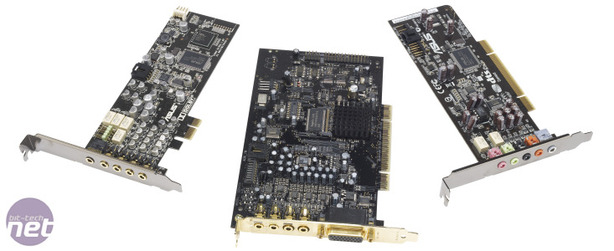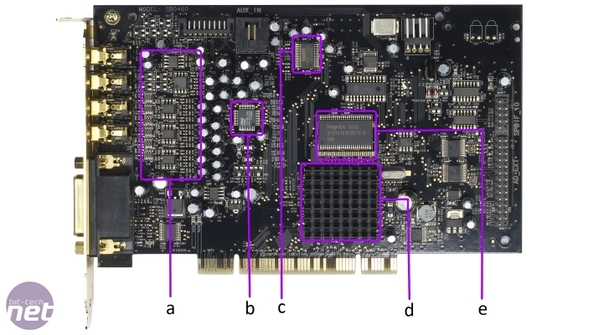Sound Cards, the Basics
A sound card of any price is built around a handful of key components: an audio processor, a digital-to-analogue converter (DAC) and analogue-to-digital converter (ADC) to translate the data signal from the processor into a meaningful audio stream, and operational amplifier chips (op-amps), which provide volume and can have a marked effect on audio quality.When it comes to gaming, the main advantage of a high quality sound card is its ability to accurately render positional audio and environmental effects, such as the changing sound of footsteps as they move from one surface to another (steel plating to concrete, for example) or weapons fire that reverberates differently in spaces of different size.
Only Creative's Sound Blaster X-Fi cards have full hardware support for Creative's own EAX 5.0 Environmental Audio Extensions standard, but this is no longer a major concern, as most games don’t use EAX. Creative has even admitted that EAX is now in decline, and is supporting the OpenAL EFX standard for implementing environmental sound effects. The quality of analogue surround sound is dependent on the quality of your card's components, as well as the source material being played, and the software used to play it.
The Xbox and PlayStation consoles have helped to introduce two digital standards for gaming, DTS Connect Dolby Digital Live. As many games are developed for console and PC simultaneously, many PC games support these digital standards. Digital surround-sound audio output (via S/PDIF or HDMI) isn't affected by the analogue circuitry of your card - it's instead dependent on the amplifier you feed it to.
If you're into films, you'll probably want surround sound support from your sound card – but your card still has to support the standard. Most sound cards (including the three we look at in this article) support surround sound in either analogue or digital form, or both.
Anatomy of a Sound Card
As we discuss above, a sound card is comprised of a few fundamental components. They're usually found in roughly the same place on a card, so here's where to look when you're trying to work out what's on your card.Key
- a Operational amplifiers, or op-amps (can be single chip, or per-channel as here)
- b Digital-to-analogue converter (DAC)
- c Analogue-to-digital converter (ADC)
- d Audio processor
- e X-RAM (certain Creative X-Fi cards only)

MSI MPG Velox 100R Chassis Review
October 14 2021 | 15:04












Want to comment? Please log in.